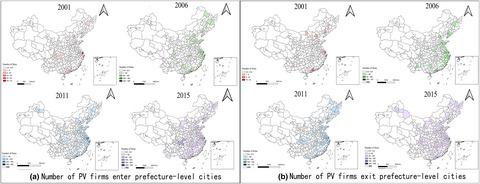Our official English website, www.x-mol.net, welcomes your
feedback! (Note: you will need to create a separate account there.)
Path transplantation: How to use the power of irrigation – a case study of the photovoltaic industry in China
The Geographical Journal ( IF 3.6 ) Pub Date : 2021-06-08 , DOI: 10.1111/geoj.12401 Canfei He 1 , Zhang Wei 1
The Geographical Journal ( IF 3.6 ) Pub Date : 2021-06-08 , DOI: 10.1111/geoj.12401 Canfei He 1 , Zhang Wei 1
Affiliation

|
Path transplantation, as an essential type of path creation, brings in external knowledge, technology, skilled individuals, and foreign capital, which enables developing regions to catch up with more developed ones through leap-forward development. However, most economic geography studies have focused on path branching and diversification of new industries, which are more common in developed regions. This study adjusts the canonical four-phase framework based on previous studies to analyse the impact of various forces on path transplantation phase by phase. Two main types of forces, “soil conditions” and “irrigation measures,” jointly impact the evolutionary path of transplantation. Their influences vary in different phases. Irrigation measures help in attracting new industry and increasing efficiency of transplantation. However, as new industry grows up and moves to the maturation phase, the impact of irrigation is limited due to increasing rigidification, and soil conditions, especially technological relatedness and innovation, play more important roles. Thus, the best time to intervene is in the embryo and rooting phases and the impacts will be increasingly positive through reinforcement in the irreversible trajectory. This framework is employed to analyse the development of the photovoltaic industry in China. The empirical results prove the importance of irrigation measures, especially government support in the early stages. This provides regions with an opportunity to strategically intervene in path transplantation and promote new industries.
更新日期:2021-06-08











































 京公网安备 11010802027423号
京公网安备 11010802027423号